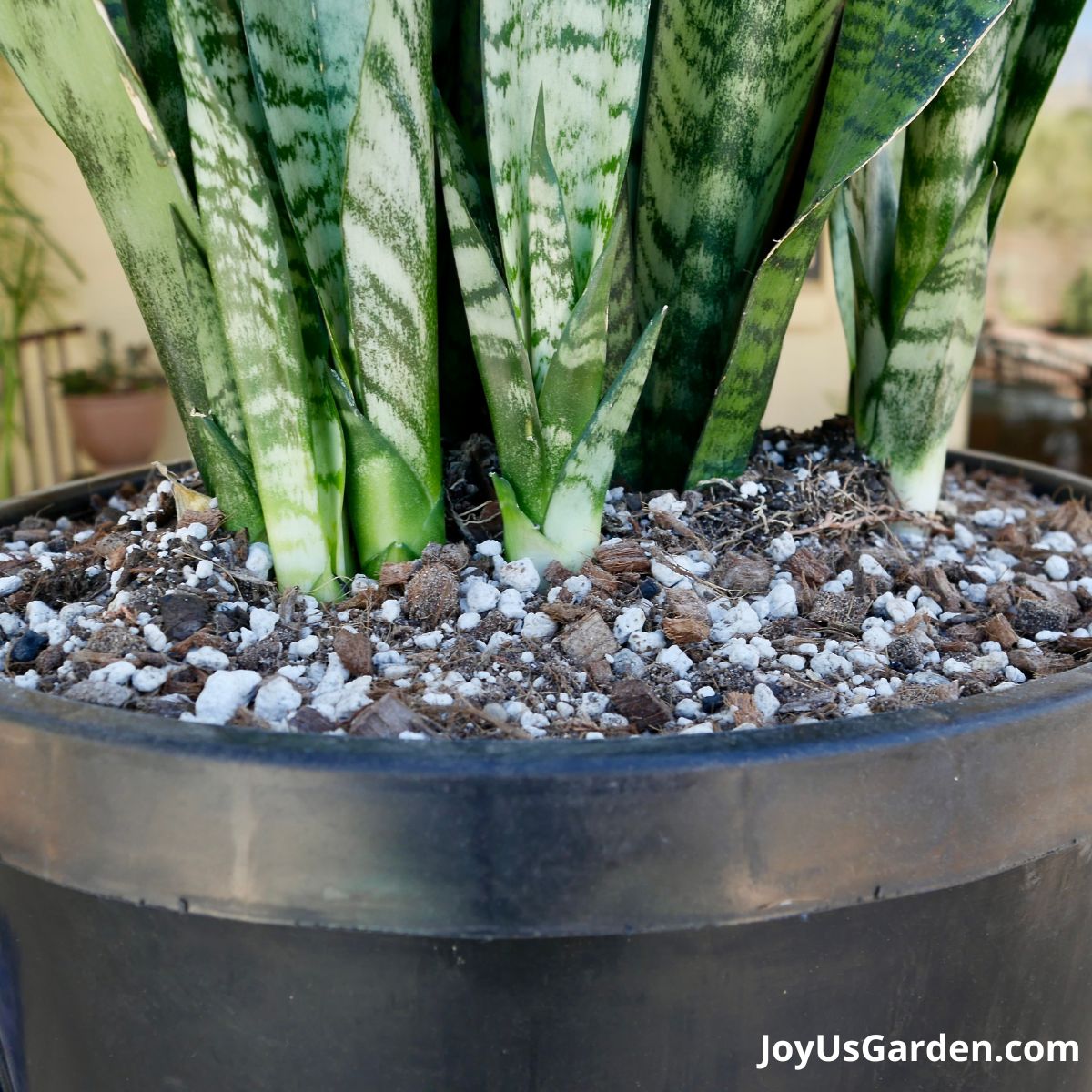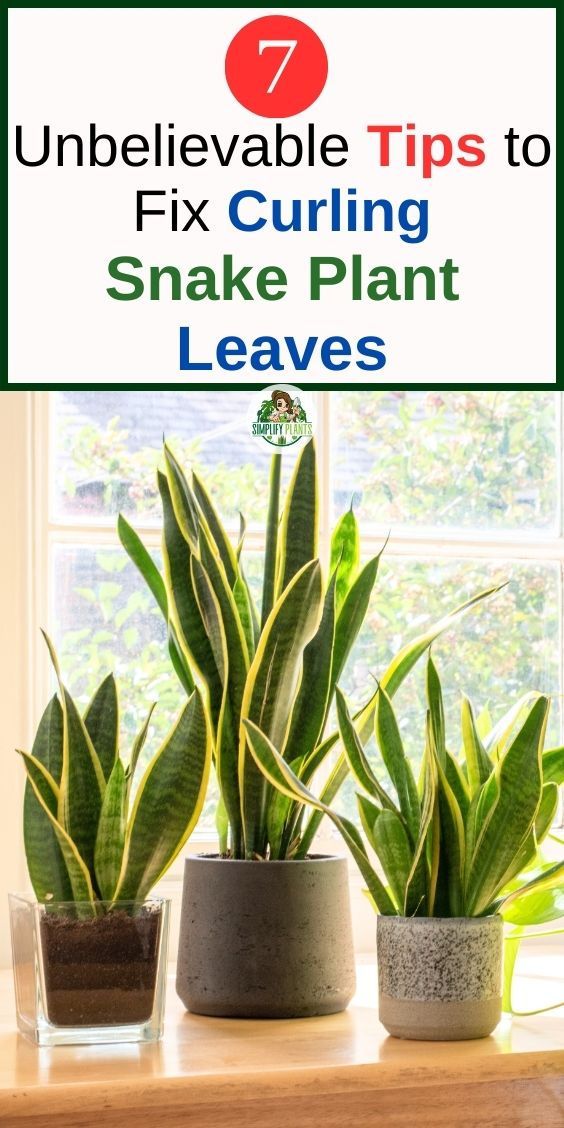Snake Plant Repotting Guide
Importance of Repotting
Snake plants, also known as Sansevieria, need repotting every 2-3 years or when they outgrow their containers. It’s vital to observe signs indicating the necessity for repotting rather than adhering to a strict schedule.
Repotting allows the plant more space for healthy growth. Snake plants can tolerate being slightly rootbound, but providing additional room every few years is essential. While these plants prefer to be slightly pot-bound, repotting every 4-6 years or when signs of stress appear is generally recommended. Larger pots offer the rhizomes more room to spread, promoting better growth.
Best Time to Repot
The optimal time to repot a snake plant is late winter or early spring. This timing gives the plant the best chance to establish itself before the active growing season begins. Repotting during this period supports robust growth and adaptation to a new pot.
In regions with extended growing seasons, repotting can also occur from early spring through early fall. This flexible timing allows the plant to maximize its growth and recover swiftly from the repotting process (Joy Us Garden). In temperate climates, early fall repotting can be beneficial if spring and summer are not feasible (Be.Green).
For comprehensive care information on Sansevieria, including snake plant watering, snake plant propagation, and addressing issues like snake plant root rot, refer to respective articles.
Choosing the Right Pot
When it comes to snake plant repotting, selecting the right pot is crucial for the plant’s health and growth. The right pot should not only be the appropriate size but also meet specific drainage requirements.
Pot Size Guidelines
Choosing the correct pot size is essential for the well-being of your snake plant. It is generally recommended to choose a pot that is just 1 to 2 inches larger in diameter than the current pot. This ensures that the plant has enough room to grow without being overwhelmed by excess soil.
| Current Pot Size | Recommended New Pot Size |
|---|---|
| 4 inches | 6 inches |
| 6 inches | 8 inches |
| 8 inches | 10 inches |
The table above provides a quick reference for selecting the next pot size based on your current pot size. Snake plants prefer being slightly root-bound, so avoid choosing a pot that is too large. A pot that is too spacious can retain excess moisture, leading to snake plant root rot, a common issue in poorly-drained conditions.
Pot Drainage Requirements
Drainage is an essential factor to consider when repotting a snake plant. A pot with proper drainage holes at the bottom allows excess water to flow out, preventing waterlogging and reducing the risk of root rot (Savvy Gardening).
Unglazed clay pots are often recommended for snake plants since these pots are porous, allowing better air and water exchange. The natural porosity of unglazed clay pots helps to keep the soil aerated and reduces the chances of waterlogging.
When selecting a pot, ensure it meets the following drainage criteria:
- Drainage holes: At least one large hole or several smaller holes at the bottom.
- Material: Unglazed clay is preferred, but any material with adequate drainage will suffice.
For more detailed information on choosing the right pot, check our dedicated guide on snake plant pot size and snake plant soil type. By adhering to these guidelines, your snake plant will thrive and remain healthy after repotting.
Soil Mix for Repotting
Selecting the right soil mix for repotting your snake plant is crucial for its health and growth. Snake plants require a well-draining soil to prevent issues such as root rot. Let’s delve into the ideal potting mix components and the importance of good soil drainage.
Ideal Potting Mix Components
To create an optimal potting mix for your snake plant, consider incorporating the following components, which are known for their excellent drainage capabilities and nutrient content:
Recommended Potting Mix Components
- Perlite: Enhances aeration and drainage.
- Coco Coir: Provides good moisture retention while allowing excess water to drain.
- Sand: Ensures free-flowing water through the soil, reducing the risk of waterlogged roots.
- Compost: Adds organic matter and nutrients to the soil.
You can create a balanced potting mix by blending these materials:
| Component | Ratio |
|---|---|
| Potting Soil (indoor plants) | 2/3 |
| Succulent and Cactus Mix | 1/3 |
| Organic Compost | Handful |
| Worm Compost | 1/2 inch layer |
References: Joy Us Garden, Savvy Gardening, Lively Root
For those looking for an alternative that is peat-free, a mix of coco coir, perlite, and sand is highly effective. Alternatively, a pre-mixed succulent or cactus soil can provide the necessary drainage and aeration.
Soil Draining Recommendations
Proper soil drainage is essential for the health of your snake plant. Well-draining soil prevents water from sitting around the roots, thereby reducing the risk of root rot—a common problem in poorly drained soils.
Here are some tips to ensure adequate drainage:
- Use Well-Draining Soil Mix: Incorporate components like perlite, sand, and coco coir to ensure the soil mix drains efficiently.
- Choose Suitable Pots: Opt for pots with drainage holes to allow excess water to escape. Check out our detailed guide on choosing the right pot size and drainage.
- Avoid Overwatering: Monitor your watering habits and avoid overwatering. Following proper snake plant watering guidelines can prevent waterlogging and keep your plants healthy.
- Layering Technique: Consider adding a layer of small rocks or clay pebbles at the bottom of the pot to improve drainage before adding soil.
Use a moisture meter to regularly check the soil moisture level. This helps determine the best time to water your plant and avoid overwatering. For more insights into snake plant care, visit our article on Snake Plants: Essential Care Tips.
By using the right potting mix and ensuring good drainage, you can provide an optimal growing environment for your snake plant, promoting its health and growth.
Repotting Process
Signs Your Snake Plant Needs Repotting
Recognizing the signs that your snake plant requires repotting is essential to maintain its health and growth. Here are some indicators:
- Root Bound: If the roots start to grow in a circular pattern around the pot or emerge from the drainage holes.
- Crowded Growth: When the plant seems overcrowded or the leaves are tightly packed.
- Slow Growth: Noticeable reduction in the plant’s growth rate.
- Soil Issues: Degraded soil, poor drainage, or constant drying out.
For more information about maintaining snake plants, check out our snake plant maintenance guide.
Step-by-Step Repotting Instructions
Follow these steps for successful repotting of your snake plant:
- Gather Materials:
- New pot (1-2 inches larger in diameter than the original pot, with drainage holes)
- Fresh potting mix (snake plant soil type)
- A trowel
- A clean, sharp knife (optional)
- Prepare the New Pot:
- Ensure the new pot has proper drainage. For optimal results, use unglazed clay pots as they promote air and water exchange.
- Remove the Plant:
- Gently remove the snake plant from its current pot. If it’s root-bound, carefully loosen the roots with your fingers. You can refer to our snake plant root rot guide to understand root health better.
- Inspect and Clean the Roots:
- Check for and trim any dead or rotting roots. If dividing the plant, ensure no more than 1/3 is removed to avoid stressing it (Joy Us Garden).
- Repot the Plant:
- Fill the new pot partially with the fresh potting mix. Position the plant in the center and fill around it, ensuring the top of the root ball is just below the pot’s rim.
- Water Thoroughly:
- After repotting, water the plant thoroughly to settle the soil. Avoid overwatering to prevent problems like root rot (Savvy Gardening).
- Placement:
- Place the repotted plant in an area with indirect sunlight.
- Post-Repotting Care:
- Avoid fertilizing immediately. Allow the plant time to adjust to its new environment.
For a more comprehensive guide on snake plant care, including watering and lighting tips, check out our additional resources. Following these steps will help ensure your snake plant continues to thrive in its new home.
Aftercare Tips
After repotting your snake plant, proper aftercare is essential to ensure its health and vigor. This includes both watering practices and ideal sunlight and location arrangements.
Watering Post-Repotting
It’s crucial to handle watering with care post-repotting. Fresh soil is already sufficiently moist and provides necessary nutrients, so watering right after the transfer can harm your plant. According to Lively Root, avoid watering your snake plant for a few days post-repotting. Allow it to settle into its new environment before resuming regular watering.
For subsequent watering, monitor the soil moisture. Snake plants prefer to be on the drier side, so ensure the soil drains well to avoid root rot. It’s advisable to wait until the top inch of the soil is dry before watering again. If you notice symptoms like overwatering or root rot, reconsider your watering routine.
Sunlight and Location Considerations
The right sunlight and location are key to the recovery and growth of your repotted snake plant. Snake plants are resilient and adaptable to various light conditions, but they thrive best in indirect sunlight. Place your plant in a well-lit area that receives partial to full indirect sunlight. Overexposure to direct sunlight can cause the leaves to scorch and damage the plant.
Positioning your snake plant in a suitable location helps in optimal growth:
- Avoid placing the plant in direct sunlight for extended periods.
- A spot near a north or east-facing window is ideal for indirect light.
- Ensure the area has good airflow to prevent mold and pests.
For more details on the ideal lighting conditions, visit our guide on snake plant sunlight.
By paying attention to these aftercare tips—managing water correctly and ensuring proper sunlight and location—you can help your snake plant thrive after repotting. For more insights into maintaining healthy snake plants, explore our detailed articles on snake plant care and snake plant soil.




